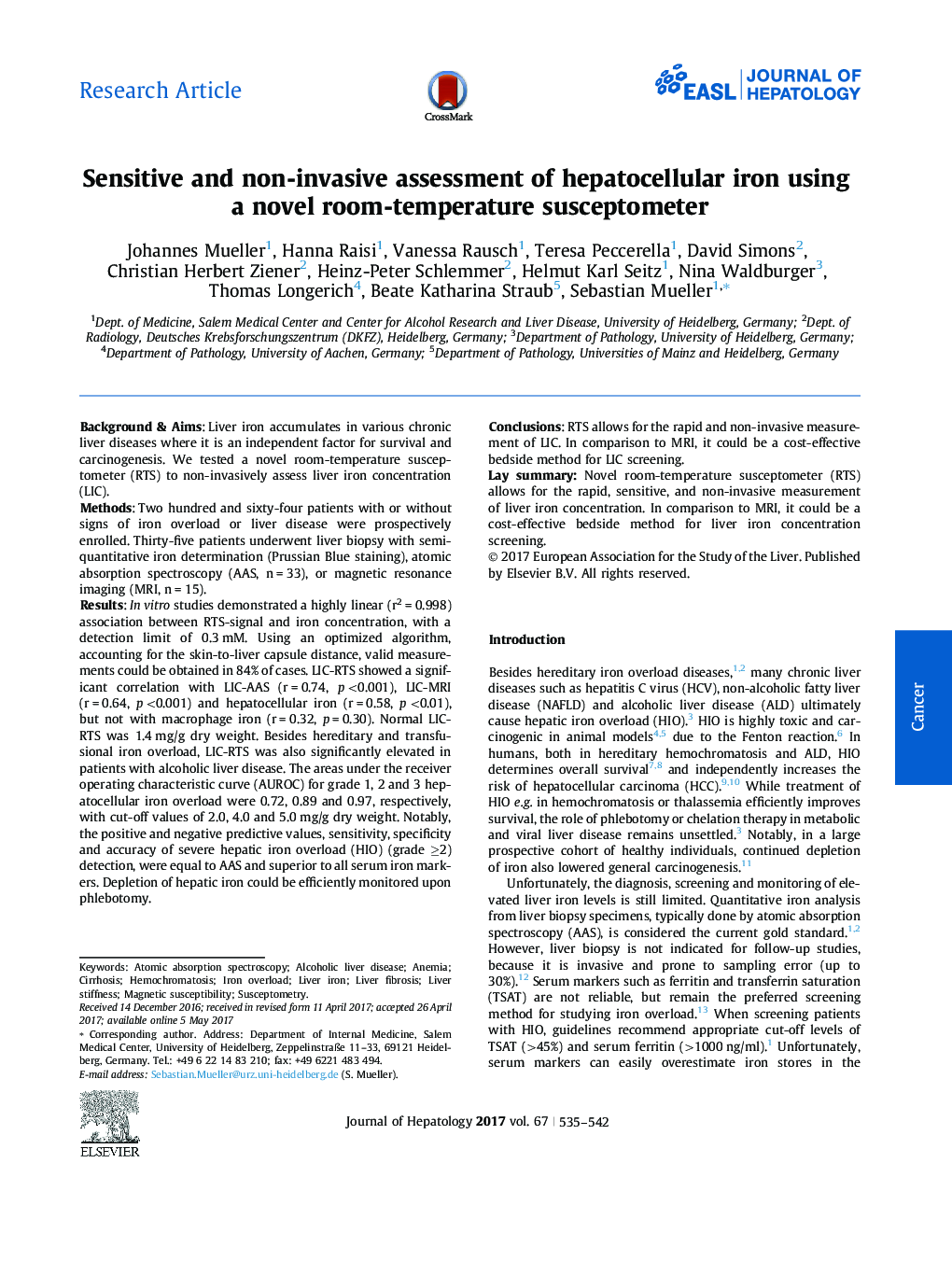| Article ID | Journal | Published Year | Pages | File Type |
|---|---|---|---|---|
| 5660398 | Journal of Hepatology | 2017 | 8 Pages |
â¢Non-invasive and sensitive detection of hepatocellular iron overload.â¢Performance comparable to AAS and MRI.â¢Promising cost-effective tool for liver iron screening.â¢Follow-up of hepatic iron after phlebotomy.â¢Detection of hepatic iron overload in metabolic liver diseases.
Background & AimsLiver iron accumulates in various chronic liver diseases where it is an independent factor for survival and carcinogenesis. We tested a novel room-temperature susceptometer (RTS) to non-invasively assess liver iron concentration (LIC).MethodsTwo hundred and sixty-four patients with or without signs of iron overload or liver disease were prospectively enrolled. Thirty-five patients underwent liver biopsy with semiquantitative iron determination (Prussian Blue staining), atomic absorption spectroscopy (AAS, n = 33), or magnetic resonance imaging (MRI, n = 15).ResultsIn vitro studies demonstrated a highly linear (r2 = 0.998) association between RTS-signal and iron concentration, with a detection limit of 0.3 mM. Using an optimized algorithm, accounting for the skin-to-liver capsule distance, valid measurements could be obtained in 84% of cases. LIC-RTS showed a significant correlation with LIC-AAS (r = 0.74, p <0.001), LIC-MRI (r = 0.64, p <0.001) and hepatocellular iron (r = 0.58, p <0.01), but not with macrophage iron (r = 0.32, p = 0.30). Normal LIC-RTS was 1.4 mg/g dry weight. Besides hereditary and transfusional iron overload, LIC-RTS was also significantly elevated in patients with alcoholic liver disease. The areas under the receiver operating characteristic curve (AUROC) for grade 1, 2 and 3 hepatocellular iron overload were 0.72, 0.89 and 0.97, respectively, with cut-off values of 2.0, 4.0 and 5.0 mg/g dry weight. Notably, the positive and negative predictive values, sensitivity, specificity and accuracy of severe hepatic iron overload (HIO) (grade â¥2) detection, were equal to AAS and superior to all serum iron markers. Depletion of hepatic iron could be efficiently monitored upon phlebotomy.ConclusionsRTS allows for the rapid and non-invasive measurement of LIC. In comparison to MRI, it could be a cost-effective bedside method for LIC screening.Lay summary: Novel room-temperature susceptometer (RTS) allows for the rapid, sensitive, and non-invasive measurement of liver iron concentration. In comparison to MRI, it could be a cost-effective bedside method for liver iron concentration screening.
Graphical AbstractDownload high-res image (242KB)Download full-size image
